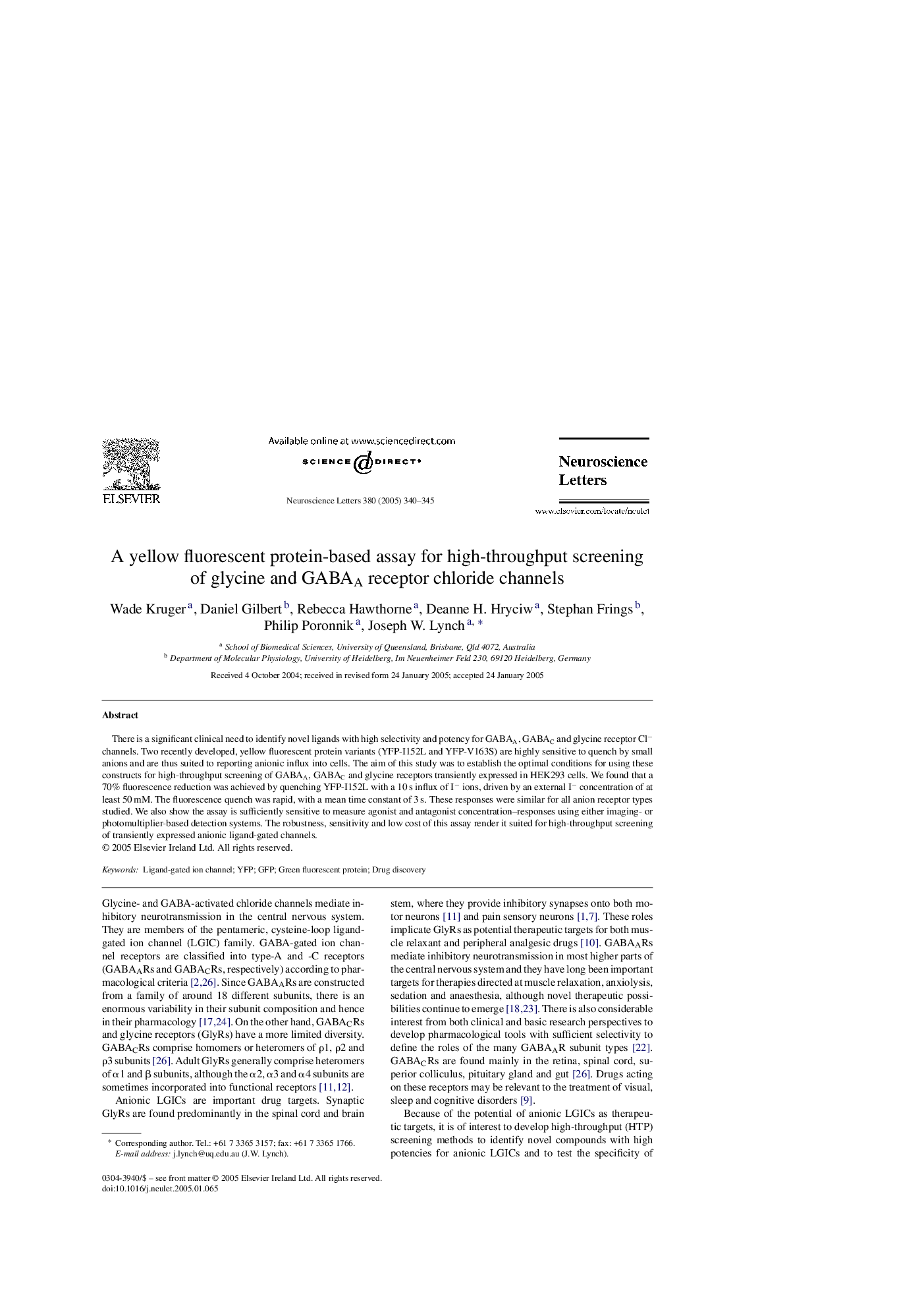| Article ID | Journal | Published Year | Pages | File Type |
|---|---|---|---|---|
| 9429054 | Neuroscience Letters | 2005 | 6 Pages |
Abstract
There is a significant clinical need to identify novel ligands with high selectivity and potency for GABAA, GABAC and glycine receptor Clâ channels. Two recently developed, yellow fluorescent protein variants (YFP-I152L and YFP-V163S) are highly sensitive to quench by small anions and are thus suited to reporting anionic influx into cells. The aim of this study was to establish the optimal conditions for using these constructs for high-throughput screening of GABAA, GABAC and glycine receptors transiently expressed in HEK293 cells. We found that a 70% fluorescence reduction was achieved by quenching YFP-I152L with a 10Â s influx of Iâ ions, driven by an external Iâ concentration of at least 50Â mM. The fluorescence quench was rapid, with a mean time constant of 3Â s. These responses were similar for all anion receptor types studied. We also show the assay is sufficiently sensitive to measure agonist and antagonist concentration-responses using either imaging- or photomultiplier-based detection systems. The robustness, sensitivity and low cost of this assay render it suited for high-throughput screening of transiently expressed anionic ligand-gated channels.
Related Topics
Life Sciences
Neuroscience
Neuroscience (General)
Authors
Wade Kruger, Daniel Gilbert, Rebecca Hawthorne, Deanne H. Hryciw, Stephan Frings, Philip Poronnik, Joseph W. Lynch,
